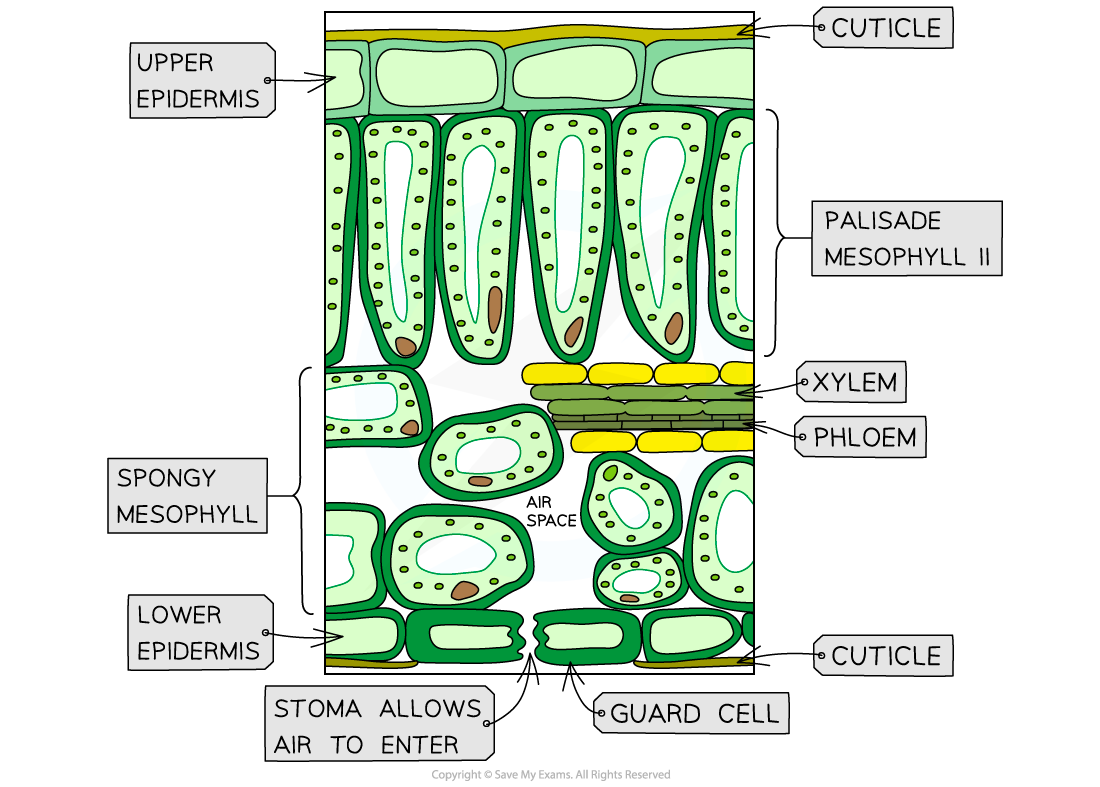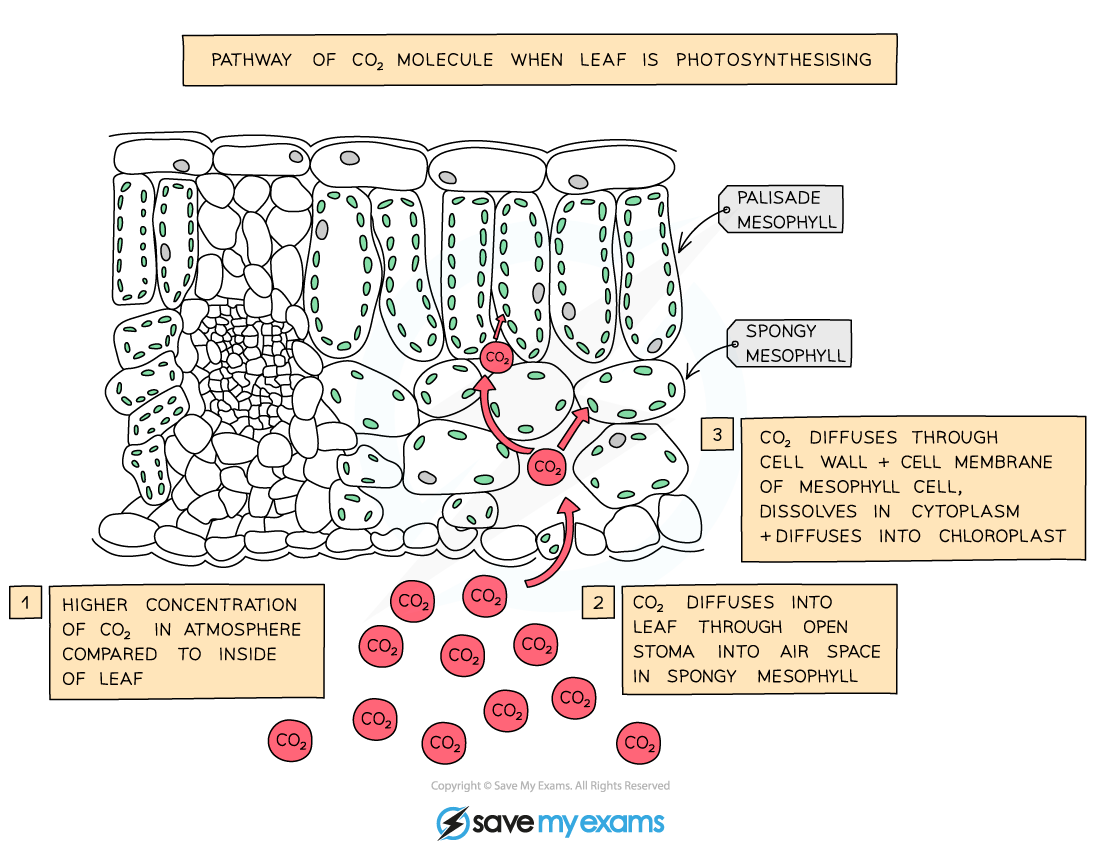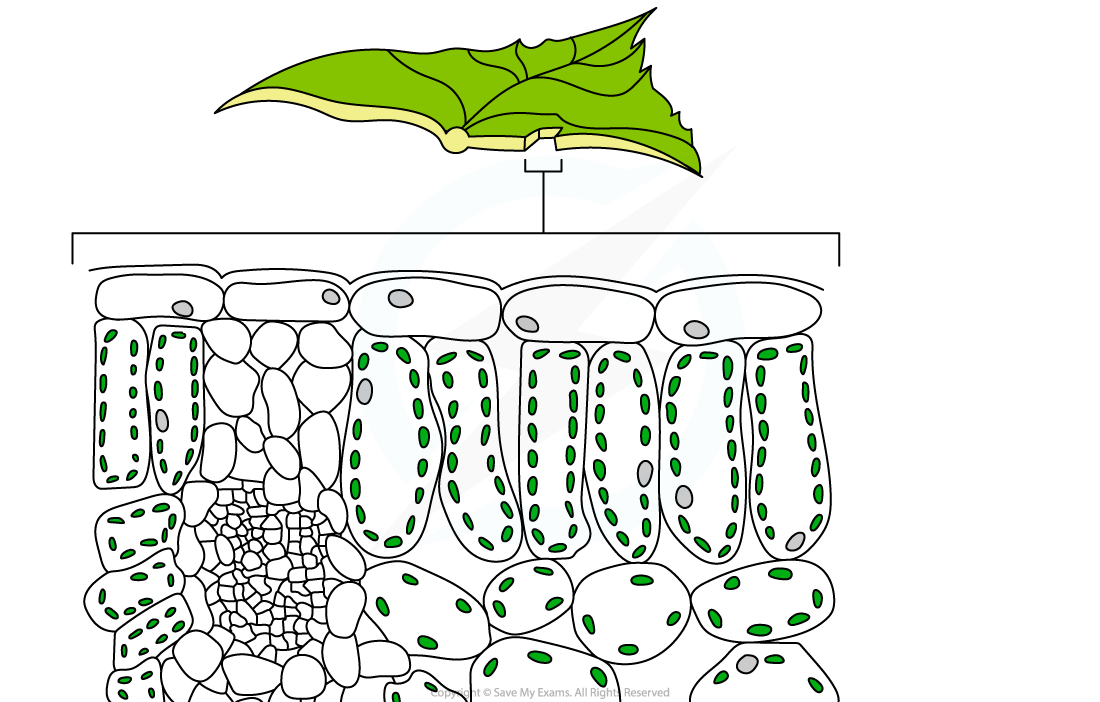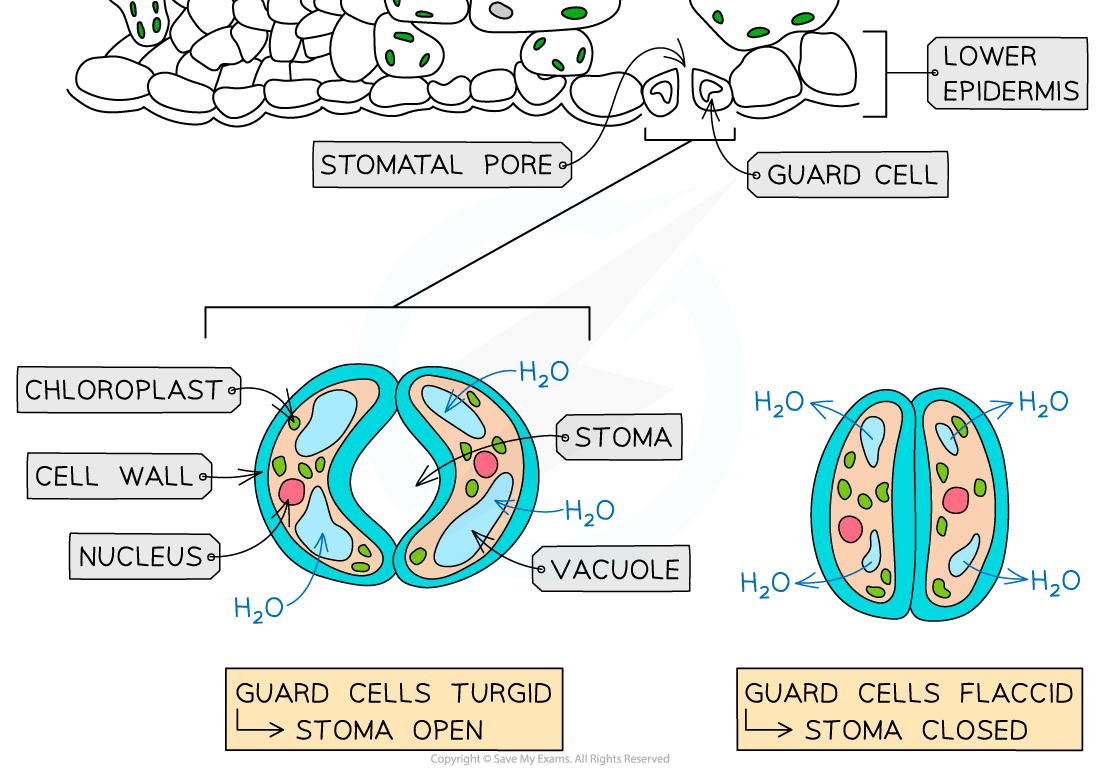- 翰林提供学术活动、国际课程、科研项目一站式留学背景提升服务!
- 400 888 0080
Edexcel IGCSE Biology 复习笔记 2.7.2 Leaf Structure
Edexcel IGCSE Biology 复习笔记 2.7.2 Leaf Structure
Leaf Structure
- The structure of the leaf is adapted to carry out both photosynthesis and gas exchange
- The different cell types (palisade mesophyll, spongy mesophyll etc.) and tissues are arranged in a specific way to facilitate these processes

The cross-section of a leaf
Leaf structure and gas exchange
- The leaf is specifically adapted to maximise gas exchange
- There are 3 key gases which we must consider
- Carbon dioxide - released in respiration but used in photosynthesis
- Oxygen - released in photosynthesis but used in respiration
- Water vapour - released in respiration and transpiration
- The route of diffusion of carbon dioxide into the leaf can be seen in the diagram below
- Gases will always diffuse down a concentration gradient (from where there is a high concentration to where there is a low concentration)

Pathway of carbon dioxide from atmosphere to chloroplasts by diffusion.
atmosphere → air spaces around spongy mesophyll tissue → leaf mesophyll cells → chloroplast
Adaptations of the whole leaf for gas exchange
- Adaptations of leaves to maximise gas exchange:
- They are thin which gives a short diffusion distance
- They are flat which provides a large surface area to volume ratio
- They have many stomata which allow movement of gases in and out of the air spaces inside the leaf to maintain a steep concentration gradient
- Other adaptations of the internal leaf structure/tissues include:
- Air spaces to allow gas movement around the loosely packed mesophyll cells
- Many stomata in the lower epidermis open in sunlight to allow gas movement in and out of the leaf
- Thin cell walls allow gases to move into the cells easily
- Moist air which gases can dissolve into for easier movement into and out of cells
- The close contact between the cells and the air spaces allows efficient gas exchange for photosynthesis and respiration
Stomata
- Stomata are spaces found between two guard cells predominantly on the lower epidermis of the leaf
- The guard cells are responsible for the opening and closing of the stomatal pore which controls gas exchange and water loss
- Stomata open when water moves (by osmosis) into the guard cells causing them to become turgid
- This allows gases to diffuse in and out of the leaf through the stomatal pore
- Stomata tend to open when there is plenty of water and sunlight
- Stomata close when the guard cells lose water (by osmosis) to the neighbouring epidermal cells and they become flaccid
- This prevents any diffusion into or out of the leaf
- Stomata tend to close due to low water availability or low sunlight


The guard cells control the opening and closing of the stomata
站内搜索
竞赛真题免费下载(点击下载)
在线登记
最新发布
© 2024. All Rights Reserved. 沪ICP备2023009024号-1





